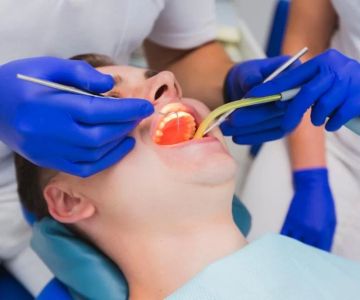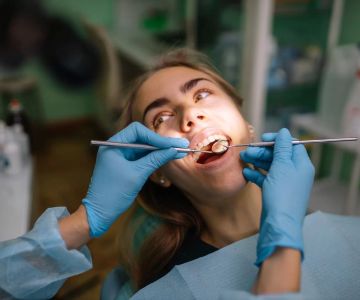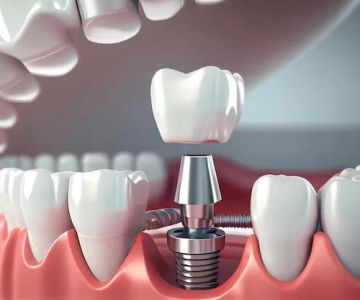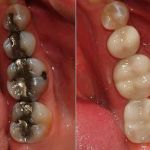How to Prevent Teeth from Shifting After Orthodontic Treatment: Essential Tips
- The Role of Retainers in Teeth Stability
- Post-Orthodontic Care and Tips for Long-Term Success
- Common Challenges and How to Overcome Them
- Real-Life Experiences: Preventing Relapse After Braces
1. The Role of Retainers in Teeth Stability
After undergoing orthodontic treatment, one of the most crucial steps to prevent teeth from shifting is wearing retainers. Retainers help maintain the position of your teeth and allow the bone and gums to adjust to their new shape. This phase of treatment is vital, as your teeth can easily relapse into their previous position without the proper support.
There are two main types of retainers: fixed and removable. Fixed retainers are attached to the back of your teeth, while removable ones are worn as a separate device. The choice of retainer depends on the specifics of your orthodontic treatment and your dentist’s recommendation.
2. Post-Orthodontic Care and Tips for Long-Term Success
Maintaining proper oral hygiene and following post-treatment instructions is crucial in preventing teeth from shifting after orthodontic treatment. Brushing your teeth regularly, flossing, and using mouthwash help ensure your teeth stay healthy and aligned. Additionally, avoid any habits that could negatively impact your teeth, such as chewing on hard objects or using your teeth to open packages.
After treatment, it’s also important to attend follow-up appointments with your orthodontist. These visits allow them to monitor your progress and address any concerns early on.
3. Common Challenges and How to Overcome Them
Even with the best efforts, some people face challenges in preventing their teeth from shifting. Common issues include forgetting to wear retainers or experiencing discomfort during the retention phase. It’s essential to stay committed to your orthodontic care and follow your dentist’s advice on retainer wear times.
If you experience discomfort or notice your teeth shifting, it’s important to contact your orthodontist as soon as possible. Adjustments can be made to your treatment plan to ensure the best long-term results.
4. Real-Life Experiences: Preventing Relapse After Braces
Many patients experience initial success in their orthodontic treatment, only to notice slight shifting of teeth months or years later. A real-life example is Sarah, a 25-year-old who had braces for two years. She wore her retainer diligently for the first year but then began to slack off. A year later, she noticed her front teeth were shifting again, and she was forced to return to her orthodontist for minor adjustments. This is a reminder of the importance of consistency in post-orthodontic care.
By staying committed to wearing your retainer as instructed, you can avoid similar challenges and maintain your results long term.
Maintaining your teeth's position after orthodontic treatment requires effort and consistency, but with the right steps, you can ensure a beautiful, lasting smile. If you're looking for more information or products to help with your dental care, visit Dentistry Toothtruth for expert advice and quality dental products.







 Dr. Sandra Villamil, DDS4.0 (21 review)
Dr. Sandra Villamil, DDS4.0 (21 review) Doc Bresler's Cavity Busters4.0 (363 review)
Doc Bresler's Cavity Busters4.0 (363 review) ProSmile Dentistry: Parisa Zarbafian DDS5.0 (29 review)
ProSmile Dentistry: Parisa Zarbafian DDS5.0 (29 review) Stratford Dental Center4.0 (43 review)
Stratford Dental Center4.0 (43 review) Dr. John M. Clifford, DDS0.0 (0 review)
Dr. John M. Clifford, DDS0.0 (0 review) Shawn McCarthy, DDS, MS0.0 (0 review)
Shawn McCarthy, DDS, MS0.0 (0 review) The Importance of Oral Health Education During Pregnancy for a Healthy Pregnancy
The Importance of Oral Health Education During Pregnancy for a Healthy Pregnancy Best Tips for Brushing Your Teeth Properly for Healthy Gums: Essential Techniques for Oral Health
Best Tips for Brushing Your Teeth Properly for Healthy Gums: Essential Techniques for Oral Health Why Skipping Dental Checkups Can Lead to Bigger Oral Health Problems
Why Skipping Dental Checkups Can Lead to Bigger Oral Health Problems Advantages of Porcelain Dental Restorations
Advantages of Porcelain Dental Restorations How Can Diabetes Cause Tooth and Gum Problems? Preventing and Managing Oral Health Issues
How Can Diabetes Cause Tooth and Gum Problems? Preventing and Managing Oral Health Issues Healthy Habits for Promoting Good Oral Health and Hygiene: Tips for a Healthy Smile
Healthy Habits for Promoting Good Oral Health and Hygiene: Tips for a Healthy Smile